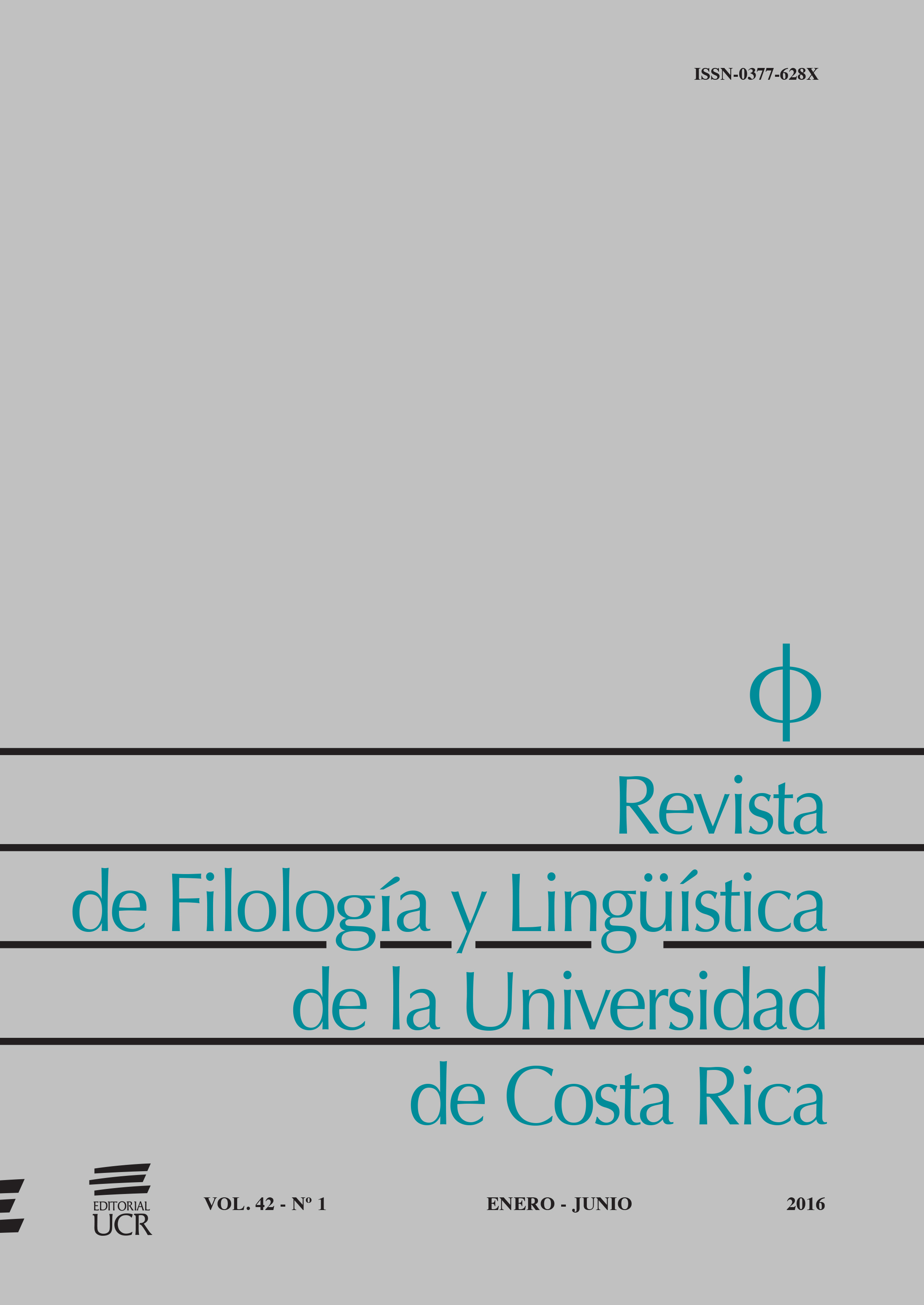Abstract
In 2002, the Publishing House of the University of Costa Rica published, in enlarged edition, a collection of stories by Venezuelan Alberto Jimenez Ure with the title Abominable Tales. In them exacerbated, truculent and dirty eroticism is contaminated by a rhetoric of hyperbole and perversion. Body mutilations abound and rub shoulders with an unconventional queer sexuality, which decentralizes the image of the human being and puts it in the limits not only of abjection, but also cannibalistic perversion. The first two stories of the collection, “The cannibal anus” and “Mutilated” are discussed in this article.
References
Arley-Fonseca, M. (2013). La vagina dentada en un mito nivaclé: Pérdidas como parte de la erotización corporal. Revista de Filología y Lingüística. 39 (1), 41-46.
Bajtín. M. (1986). Problemas de la poética de Dostoievski. México, D. F.: Fondo de Cultura Económica.
Bajtín, M. (1995). La cultura popular en la Edad Media y el Renacimiento. El contexto de François Rabelais. Madrid: Alianza Ediorial.
Fernández-Moreno, C. (Coord.). (1977). América Latina en su literatura. México, D. F.: Siglo Veintiuno Editores.
Foster, D. W. (2000). Producción cultural e identidades homoeróticas: Teoría y aplicaciones. San José: Editorial de la Universidad de Costa Rica.
García-Pelayo y Gross, R. (1976). Pequeño Larousse Ilustrado. París: Ediciones Larousse.
García-Márquez, G. (2000). Cien años de soledad. (18 ed.). Madrid: Editorial Espasa Calpe.
Gutiérrez-Estévez, M. y Pitarch, P. (2010). Retóricas del cuerpo amerindio. Madrid/Frankfurt: Iberoamericana/Vervuert.
Herra, R. Á. (1988), Lo monstruoso y lo bello. San José: Editorial de la Universidad de Costa Rica.
Jiménez-Ure, A. (2002). Cuentos abominables. San José: Editorial de la Universidad de Costa Rica.
Le Breton, D. (2002). La sociología del cuerpo. Buenos Aires: Editorial Nueva Visión.
Matas-Caballero, J. (2001). El petrarquismo en los poetas novohispanos del Cancionero Flores de Baria Poesía. Estudios Humanísticos. Filología. 23, 75-98.
Münzel, M. (2010). Antropofagia y sentimientos: Venganza y cariño en el cuerpo devorado. Por M. Gutiérrez y P. Pitarch (Eds.). Retóricas del cuerpo amerindio. (117-152). Madrid/Frankfurt: Iberoamericana/Vervuert.
Ponce, N. (2014). Canibalismo y literatura: ‘Mister Taylor’ de Augusto Monterroso. CAFE, Cahiers des Amériques–Figure de l’Entre. 4, 171-187.
Praz, M. (1977). La chaire, la mort et le diable dans la littérature du XIXè siècle: Le romantisme noir. París: Éditions Denoël.
Quiroga, H. (1993). Todos los cuentos. Edición de Napoleón Baccino Ponce de León/ Jorge Lafforge. Madrid/Nanterre: Colección Archivos.
Root, D. (1998). Cannibal culture: Art, Appropiation and the Commodification of Difference. Westview Press.
Sarduy, S. (1977). El barroco y el neobarroco. En Fernández-Moreno, 167-184.
Surallés, A. (2010). La retórica de traducir “cuerpo”. Por M. Gutiérrez y P. Pitarch (Eds.). Retóricas del cuerpo amerindio. (57-86). Madrid/Frankfurt: Iberoamericana/Vervuert.
Vallejo, C. (1988). Obra poética. Ferrari, A. (Ed.). Madrid/Nanterre: Colección Archivos.
